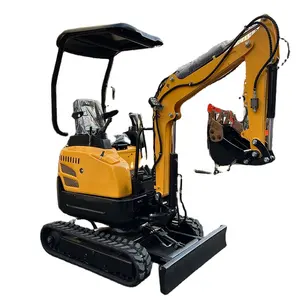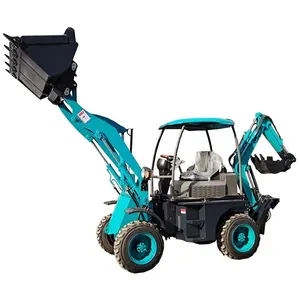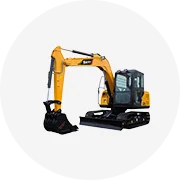Phổ biến trong ngành của bạn

Độ dày 10mm 12mm 16mm 20mm 30mm 30% Carbon fibre đầy vật liệu sợi carbon PEEK thanh tấm cho tùy chỉnh gia công CNC
70,00 US$ - 100,00 US$
Đơn hàng tối thiểu: 1 Kilogram
Vận chuyển mỗi chiếc: 17,00 US$


Nhà máy chuyên nghiệp 10% vonfram trống cacbua thanh với lỗ duy nhất
40,00 US$ - 60,00 US$
Đơn hàng tối thiểu: 10 Cái


Độ cứng cao cacbua rắn thanh tròn xi măng cacbua vonfram
40,00 US$ - 60,00 US$
Đơn hàng tối thiểu: 10 Cái


Bán buôn giá thấp chất lượng cao mặt đất Rod đôi kết thúc Threaded Rod Q 195 mạ kẽm Rod
0,02 US$
Đơn hàng tối thiểu: 1000 Cái


Chất lượng cao công nghiệp nguyên liệu 13% carbon + 2% Graphite nhựa Rod
11,00 US$ - 12,00 US$
Đơn hàng tối thiểu: 10 Cái
Vận chuyển mỗi chiếc: 26,92 US$


(Hot cung cấp) có thể điều chỉnh Rod với trừu tượng màu xanh đá cẩm thạch rèm tắm 60wx72l inch G thăng hoa chăn
0,50 US$ - 3,60 US$
Đơn hàng tối thiểu: 100 Mẫu Anh
Vận chuyển mỗi chiếc: 1,89 US$

Thanh Cuộn Backer 1/2 Inch X 20 Feet Màu Xám Giá Rẻ Để Làm Đầy Không Gian Hoặc Khớp Nối
3,00 US$ - 4,00 US$
Đơn hàng tối thiểu: 100 Cái
Các danh mục hàng đầu
Giới thiệu về thanh backer 2 inch
thanh backer 2 inch rất hữu ích tại các công trường. Chúng là những cỗ máy khổng lồ được sử dụng để mang tải cồng kềnh trong quá trình xây dựng .. thanh backer 2 inch được sử dụng để tải các vật liệu thô như mảnh vụn phá dỡ, sỏi, gỗ, cát, gạch, v.v. Chúng có khả năng chịu tải tuyệt vời . Nhu cầu của bạn về chất lượng tiêu chuẩn. thanh backer 2 inch sẽ được Alibaba.com đáp ứng.
thanh backer 2 inch được trang bị công nghệ được phát minh một cách thông minh. Chúng có một số tính năng vận hành để dễ dàng vận chuyển .. thanh backer 2 inch được cung cấp hai bánh trước và hai bánh sau lớn. Do đó, chúng có thể di chuyển nhanh chóng với tải trọng được gắn trên chúng .. thanh backer 2 inch giúp bạn giảm lao động chân tay và nâng cao năng suất tại các địa điểm xây dựng.
Máy xúc lật được phân loại thành các danh mục khác nhau dựa trên cơ chế của chúng và nhiệm vụ mà chúng thực hiện .. thanh backer 2 inch có thùng hoặc nĩa hình vuông rộng và chắc chắn được gắn ở cuối của hai cánh tay. Các cấu trúc giống như xô này xúc các chất rời khỏi mặt đất .. thanh backer 2 inch đi kèm với hệ thống kiểm soát thích hợp để quản lý thông minh các quy trình bốc và dỡ hàng. Alibaba.com cho phép bạn khám phá phạm vi rộng các trình tải để lựa chọn yêu cầu. thanh backer 2 inch.
Máy xúc làm giảm bớt công sức của bạn khi tải và chở các vật liệu xây dựng nặng. Tìm những gì phù hợp nhất. thanh backer 2 inch tại Alibaba.com với nhiều trình tải. Tại đây, tất cả hàng hóa dự trữ đều từ cửa hàng của các nhà cung cấp và nhà sản xuất được chứng nhận. Rốt cuộc, mọi khách hàng đều xứng đáng nhận được sự đảm bảo về mặt hàng hóa.
Máy xúc lật được phân loại thành các danh mục khác nhau dựa trên cơ chế của chúng và nhiệm vụ mà chúng thực hiện .. thanh backer 2 inch có thùng hoặc nĩa hình vuông rộng và chắc chắn được gắn ở cuối của hai cánh tay. Các cấu trúc giống như xô này xúc các chất rời khỏi mặt đất .. thanh backer 2 inch đi kèm với hệ thống kiểm soát thích hợp để quản lý thông minh các quy trình bốc và dỡ hàng. Alibaba.com cho phép bạn khám phá phạm vi rộng các trình tải để lựa chọn yêu cầu. thanh backer 2 inch.
Máy xúc làm giảm bớt công sức của bạn khi tải và chở các vật liệu xây dựng nặng. Tìm những gì phù hợp nhất. thanh backer 2 inch tại Alibaba.com với nhiều trình tải. Tại đây, tất cả hàng hóa dự trữ đều từ cửa hàng của các nhà cung cấp và nhà sản xuất được chứng nhận. Rốt cuộc, mọi khách hàng đều xứng đáng nhận được sự đảm bảo về mặt hàng hóa.










